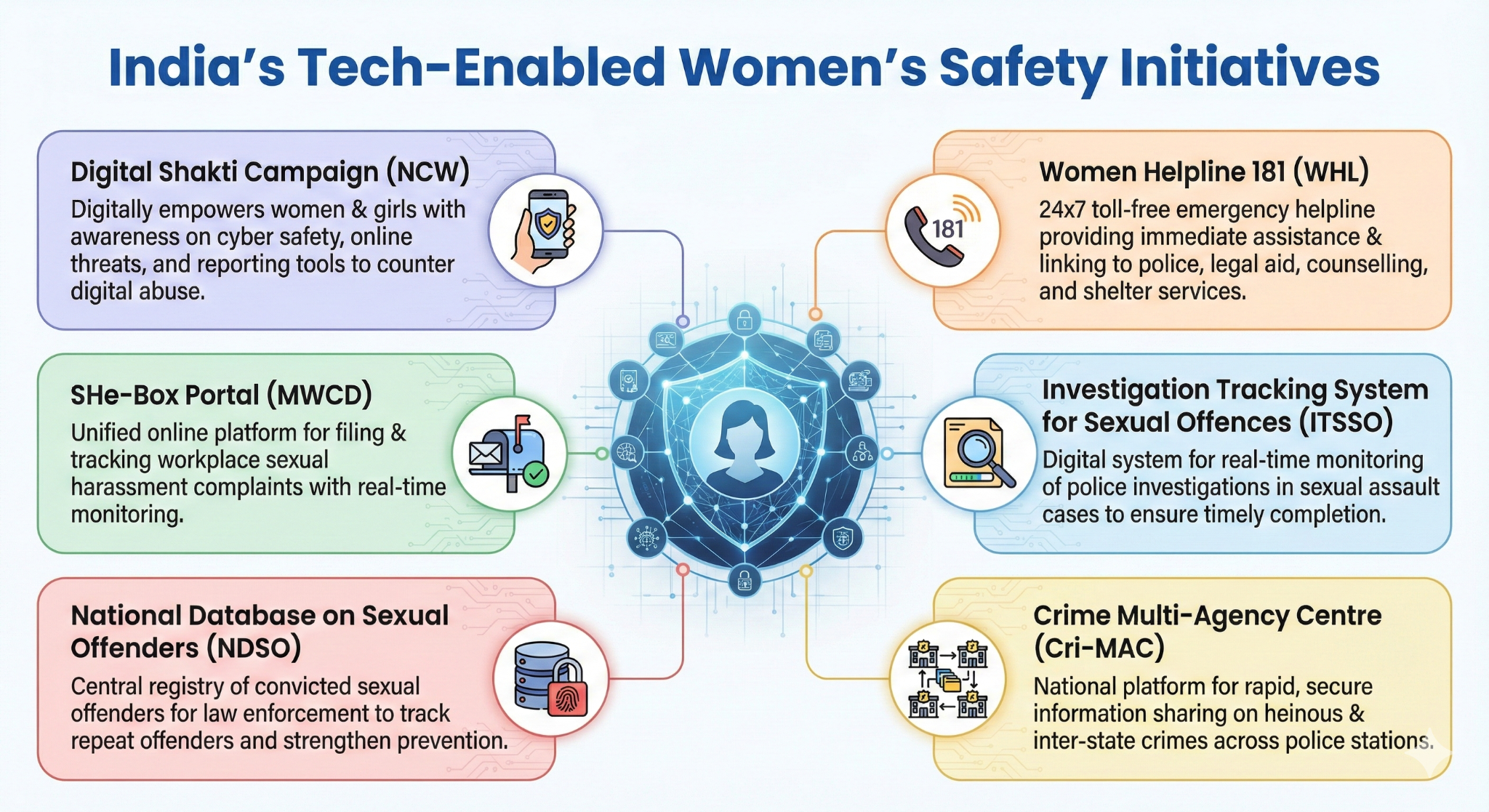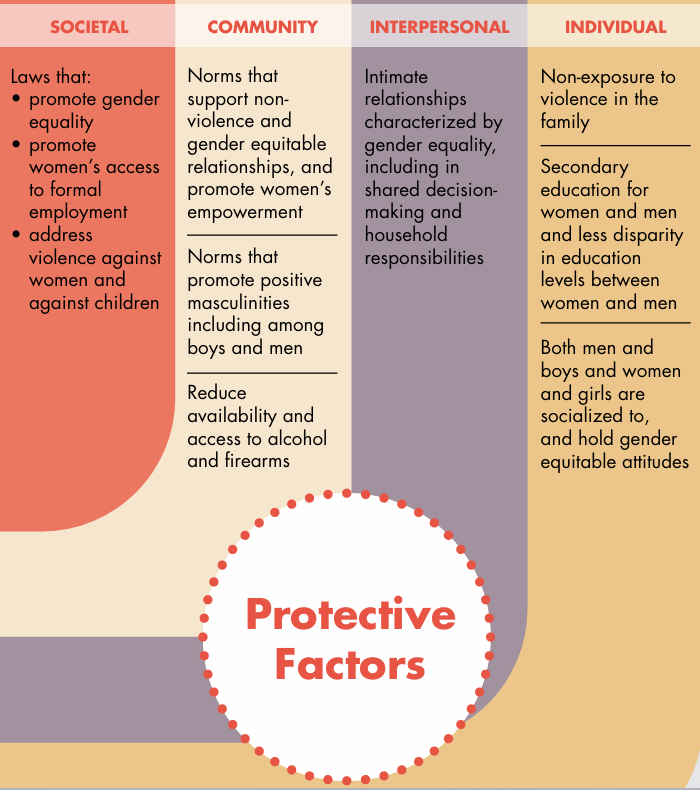Elimination of Violence against Women | 26 Nov 2025
For Prelims: International Day for the Elimination of Violence against Women, CEDAW, World Health Organisation, Mission Shakti, Swadhar Greh Scheme
For Mains: Legal reforms and criminal justice responses to gender-based violence, Issues Related to Women
Why in News?
The International Day for the Elimination of Violence against Women, observed on 25th November, is a United Nations (UN)-designated day that raises global awareness on gender-based violence and urges stronger action to protect women and girls. The 2025 theme is “UNiTE to End Digital Violence against All Women and Girls.”
International Day for the Elimination of Violence against Women
- Background: Despite the UN adopting the Convention on the Elimination of All Forms of Discrimination against Women (CEDAW), 1979 (India ratified it), gender-based violence remains widespread across the world.
- In 1993, the UN General Assembly adopted resolution 48/104, establishing the Declaration on the Elimination of Violence against Women and laying the groundwork for global action.
- In 2000, the UN formally designated 25th November as the International Day for the Elimination of Violence against Women and urged governments, international bodies, and civil society to organise awareness campaigns annually.
- Significance of the Day: The day is crucial because violence against women remains widespread as globally, 30% of women have faced physical and/or sexual violence and domestic violence isn’t criminalised in many countries.
- Violence against women is one of humanity's oldest and most pervasive injustices, yet still one of the least acted upon. More than 30 nations let rapists avoid punishment by marrying the victim, and over 40 nations lack domestic violence laws.
- The day underscores the urgent need for stronger protections, better prevention, and survivor-centred support.
What Factors Increase the Risk of Violence Against Women?
- Individual-Level Factors: Low education, childhood exposure to abuse, harmful alcohol use, and antisocial behaviour increase the likelihood of both perpetrating and experiencing violence.
- Relationship-Level Factors: Conflict-ridden relationships, poor communication, past exposure to violence, and male controlling behaviour heighten the risk of intimate partner violence.
- Power imbalances within households often normalise coercion and abuse.
- Over a fifth of women in India aged 15-49 were subjected to intimate partner violence in 2023, while nearly 30% have been affected during their lifetime, according to World Health Organisation (WHO).
- Community-Level Factors: Communities with entrenched gender inequality, weak law enforcement, limited employment for women, and poor access to support services see higher levels of violence.
- Societal-Level Factors: Patriarchal systems, discriminatory laws, and cultural beliefs around honour, purity, and male entitlement encourage violence.
- Weak punishment and inadequate implementation of laws reduce deterrence.
- Digital Media & Technology-Driven Factors: According to the UN, Artificial Intelligence (AI)-driven anonymity and weak accountability have intensified online abuse.
- Globally, 1.8 billion women and girls still lack legal protection against digital harassment.
- The rise of digital platforms has created new forms of abuse such as cyberstalking, deepfakes, doxxing, and online harassment.
- Deepfake misuse has surged, with up to 95% of online deepfakes being non-consensual pornographic content, and 99% of those targeted are women.
- Algorithm-driven amplification of misogyny, anonymity of perpetrators, and gaps in cyberlaw enforcement have made technology-facilitated gender-based violence a growing threat.
What are India’s Measures to Address Violence Against Women?
- National Commission for Women (NCW): Established in 1992, NCW is India’s apex statutory body for safeguarding women's rights.
- It reviews legal protections, recommends reforms, and handles complaints both offline and through its online portal. Most states have also constituted State Commissions for Women (SCWs) with parallel responsibilities.
- The NCW also operates a 24×7 domestic violence helpline, which connects women to police, hospitals, legal aid, and counsellors through an Interactive Voice Response (IVR)-based system under Digital India.
- Bharatiya Nyaya Sanhita, 2023: It replaced the Indian Penal Code (IPC) and introduces stringent penalties for sexual offenses, including the life imprisonment for rape of minors under 18 years.
- BNS, 2023 expands definitions of sexual offenses, mandates audio-video recording of victim statements, and prioritises crimes against women and children in trial proceedings.
- Protection of Women from Domestic Violence Act, 2005 (PWDVA): Defines an “aggrieved person” as any woman in a domestic relationship who faces harm to her physical or mental health.
- Under PWDVA, domestic violence includes physical, sexual, emotional, and economic abuse, along with dowry-related harassment, covering any behaviour that threatens a woman’s safety or well-being within a shared household.
- Sexual Harassment of Women at Workplace Act, 2013 (POSH): It protects all women at every workplace and requires employers to form Internal Committees, with Local Committees set up by the government for smaller establishments.
- The MWCD oversees implementation and operates the SHe-Box portal for online complaints, which must be resolved within 90 days.
Major Institutional Support Systems for Women’s Safety
|
Scheme / Institution |
Function |
|
Umbrella scheme for women's safety, security, and empowerment across their life cycle with vision of “women-led development”. |
|
|
Provides shelter, food, counselling, legal aid, and rehabilitation for women in difficult circumstances. |
|
|
Offers integrated support—police facilitation, medical aid, legal help, counselling, and temporary shelter—for women facing violence. |
|
|
Stree Manoraksha |
Trains OSC staff on mental-health and psycho-social support for survivors. |
|
Fast Track Special Courts (FTSCs) |
Ensures speedy trial of rape and POCSO cases; dedicated courts funded under Nirbhaya Fund. |
|
Women Help Desks (WHDs) |
Special desks in police stations for sensitive reporting, FIR assistance, and counselling for women. |
How Can Violence Against Women Be Prevented?
- WHO and UN Women’s “RESPECT” framework lays out seven key strategies to help countries fast-track progress toward SDG 5.2, the goal of eliminating violence against women and girls.
- R - Relationship Skills Strengthened: Programs targeting individuals, couples, or communities to enhance skills in conflict management, communication, and decision-making. These help in fostering healthier, non-violent relationships.
- E - Empowerment of Women: Focus on enhancing women's social and economic status, including asset ownership, microfinance programs, gender training, and mentoring.
- Empowered women are less vulnerable to violence and more likely to report abuse.
- S - Services Ensured: Ensuring that survivors of violence have access to essential services, such as police, legal, health, one-stop crisis centers, and social support services. These services help survivors recover and seek justice.
- P - Poverty Reduced: Addressing the socio-economic factors that contribute to violence, especially poverty, which increases stress and dependency in relationships.
- These interventions aim to provide financial stability and reduce violence triggered by economic stress.
- E - Environments Made Safe: Creating safe spaces for women in schools, workplaces, public spaces, and homes.
- These interventions aim to reduce exposure to violence and ensure women's physical security in their daily environments.
- C - Child and Adolescent Abuse Prevented: Programs that focus on preventing child abuse, promoting positive parenting, and nurturing family relationships. Interventions should target both boys and girls to reduce the risk of violence.
- T - Transformed Attitudes, Beliefs, and Norms: Changing harmful gender norms, attitudes, and beliefs that condone violence and reinforce male dominance.
- This includes campaigns and education that challenge stereotypes, promote gender equality, and reduce the stigma around violence survivors.
Conclusion
No society can be fair or healthy when half its population lives in fear. Ending violence against women is not just a policy goal but a matter of dignity, equality, and a basic human right.
|
Drishti Mains Question: Technology has amplified both the reach and the harm of gender-based abuse. Discuss and suggest regulatory and policy measures India should adopt. |
Frequently Asked Questions (FAQs)
Q. What is the International Day for the Elimination of Violence against Women?
Observed on 25th November, it is a UN-designated day to raise awareness and mobilise action against gender-based violencẹ
Q. What major change did the Bharatiya Nyaya Sanhita, 2023 introduce?
It expands sexual-offence definitions, mandates audio-video recording of victim statements and prescribes stricter penalties, including life imprisonment for rape of minors.
Q. How does India use technology to improve women’s safety?
India deploys platforms like SHe-Box (workplace complaints), ITSSO (investigation tracking), NDSO (sexual offenders registry), and national helplines (181) to speed reporting, tracking and inter-agency response.
Q. What is the RESPECT framework and its purpose?
RESPECT (Relationship skills; Empowerment; Services; Poverty reduction; Environments safe; Child/adolescent protection; Transform norms) is UN Women’s seven-point strategy to prevent violence and accelerate progress on SDG 5.2.
UPSC Civil Services Examination, Previous Year Questions (PYQs)
Mains
Q. We are witnessing increasing instances of sexual violence against women in the country. Despite existing legal provisions against it, the number of such incidences is on the rise. Suggest some innovative measures to tackle this menace. (2014)



